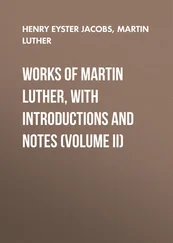Kinesthetic tactile variation
An additional variant is to ask the client to reach out and feel the words and letters in front of them, as if the words are solid, and they could touch them with their fingers, translating from the auditory or visual systems to the kinesthetic. Then I ask them to use their hands and fingers to spread out the words — and then sometimes to also spread out the letters — and to feel the empty space between them.
In some cases I will ask them to run both the auditory and visual versions of this exercise at the same time, or to add in the kinesthetic aspect as well.
After doing this, it is imperative to do a thorough congruence check again, by carefully rehearsing and testing the new response in all the different contexts in which they previously had the old response. Any concerns or objections need to be respected and satisfied in order to preserve any other useful outcomes that may have been served by the old response. This could include keeping the old anxious response in certain contexts, to maintain the protection. Usually an even better solution is to elicit or teach some kind of coping behavior in those contexts that are still perceived as dangerous, so that they no longer need the anxious response.
The verbatim transcript that follows is from a session that I did recently with a professional trombonist who got anxious whenever he played in an orchestra. In this example, I utilize aspects of both the variations described above. The transcript begins with me talking to Fred (His name has been changed):
When people come to see me, they're mostly in some kind of state of anxiety. They don't come because they think, "What shall I do? I've nothing else to do. I know — I'll just go and see Nick today." (Fred: Yeah.) So they arrive with something, number 1. Number 2, it's something that they're doing over and over again, so no matter how much they've thought about it, they don't feel any different. (Fred: Right.) So they've got to the point when they decide to see me, they're really thinking, "You know what, I've got to do something different." (Fred: Yep.) So everything's reached a bit of a boiling point. (Fred: Yeah.)
Now most of the time, what they're experiencing is the end — the final behavior at the end of the sequence. So, the final behavior is, you know, doing this. And before you get to that, you have how a person feels. And before you get to the feeling, you have what happens here, which is what they're thinking, and how they're thinking about it. Because you can't just get a feeling. (Fred: No.) You know, if I said to you, "I want you to feel wildly enthusiastic," but you're not allowed to picture anything, look at anything, think anything to yourself, or hear anything, you can't get from the state that you're in to that state. (Fred: No, no.) There's got to be some translation here. (Fred: Yeah.) So here's the good news:
In order to change the final result, you've got to change this stuff up here. (Fred: Yeah.) So it's the way in which you think and how you think that creates the feeling, that then creates the end behavior. (Fred: Right.) So, we'll explore some of that. Now, somebody goes to somebody, and they get some kind of relief for a short period of time, then usually that means it's not been contextualized enough. So the person feels totally relaxed during the session and goes, "Yeah, yeah, yeah, all is well," etc. etc.
And they go away and then they go, "OK, what's the first number? (Fred laughs.) Stravinsky's Firebird. Damn." And you start thinking to yourself, "Is it gonna go well? Is it gonna go well?" And then, "Oh, well, now I'm starting to run the anxiety program." Think this in anxious voice, probably a fast anxious voice, start to get a feeling which could be here or here (gesturing toward his chest and belly area.) then start to think, now you're feeling anxious, then you start to think, usually predictive things, "What if?" or future tense, or future case things. All anxiety's into anticipation. Now, I'm not even in the orchestra; I'm already feeling anxious. (Fred: That's right. Yeah.) I'm running through my head scenarios of different things. Now I'm thinking, "Maybe I could just run." (Fred laughs loudly.)
So, the states that people crank up, in terms of their feeling states, are through the process. The secret is to unravel the process, so the person can get what's appropriate for them. Because it's all very nice and delightful for someone to say, "Hey, a bit of adrenalin is no bad thing." And you go, "Step into my head for a day (Fred: Yeah.) and see how that feels, and then tell me if that's the same thing." (Fred: Yeah.)
Because if you're sitting there thinking, uhhhhh, over and over again in the same way, then as somebody who is a performer and who's measured on their final ability to perform, I know that this is like, "I can get through it." But I don't want to be sort of like, you know, sort of "just getting through it." I want to be enjoying what I'm doing. (Fred: Yeah, absolutely.) Because, chances are, if you're doing it in rehearsals, exactly the same music, exactly the same plays, even if you're sitting in the same seat in the same theater, with the same conductor and the same musicians, it would be absolutely fine — because you're not running the same process. (Fred: Yeah, Yeah.) Sound familiar?
Fred: Absolutely correct, on all counts. (Fred laughs.)
Nick: Somebody said to me, "How did you know that?" I said, "Well, just luck." Well, also, once you've seen your first thousand clients, then you realize there's really only going to be a few things. Well, let's just — I have an instinct over how you're doing this. And, as I said to one client, "I wouldn't want to bet against me, because I'm usually right." (Fred laughs,) So, the sort of things that you think to yourself are: Is it going to go well? That's one that you mentioned. What other things are going through your head?
Fred: (taking a deep breath) I unconsciously sort of think about sitting there and the worst things happening —
Nick: (overlapping) Like what? Forgot to get dressed?
Fred: — notes not being produced — Well, no, not that. (laughter)
Nick: The job is a trombone, not a triangle; that could be really problematic.
Fred: Just, just, you know, not being to produce notes or splitting notes, not producing very well, or just the anticipation of sitting there almost frozen with nerves, really.
Nick: OK, these are all descriptions of what could happen. What I'm interested in is — just close your eyes for a second. Now, pick one of the times when you had the anxiety in the past. Now what I'm interested in is, "What — first person — is going through your head? So if I was going to draw a cartoon of you, and write some bubbles above your head, what do I actually put in the bubbles that Fred is thinking to himself?
Fred: "Oh shit, I don't wanna be here."
Nick: "Oh shit, I don't wanna be here." All right. Now, is that a familiar phrase? Fred: Umm, yes, I think it is really.
Nick: OK. And keep your eyes closed, and just check. Is it said in an anxious kind of thought, in an anxious kind of a voice, and a quick kind of a voice? Just say, "Yes." (Fred: Yes, it is.) Saves time really, it's like a rhetorical question. OK, so keep your eyes closed. Because the first thing we're going to do is to start sorting some of this out. So think it as you have thought it: "Oh shit, I don't wanna be here," in that same quick, anxious kind of voice that you have up until now used… . And when you think it to yourself like that, what do you notice?
Fred: Tension.
Nick: OK. And where do you notice the tension? Fred: In my arms, and—
Читать дальше












